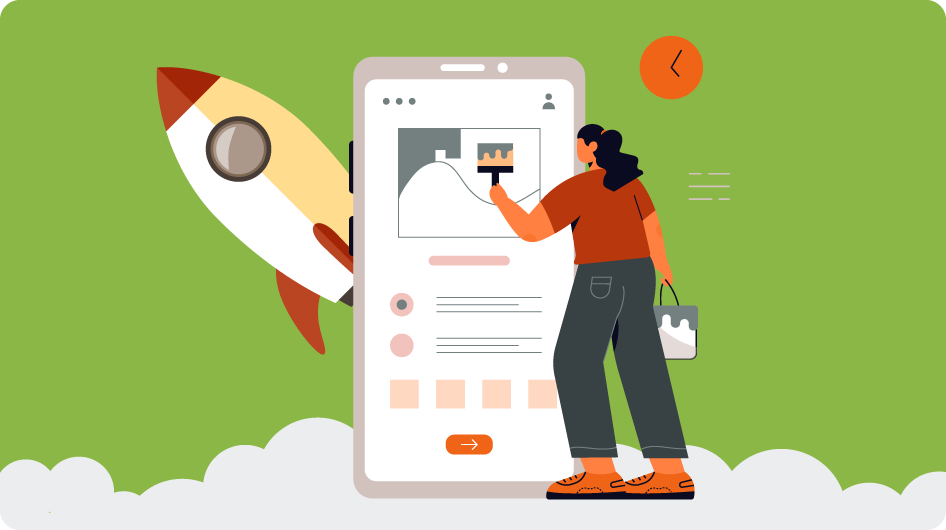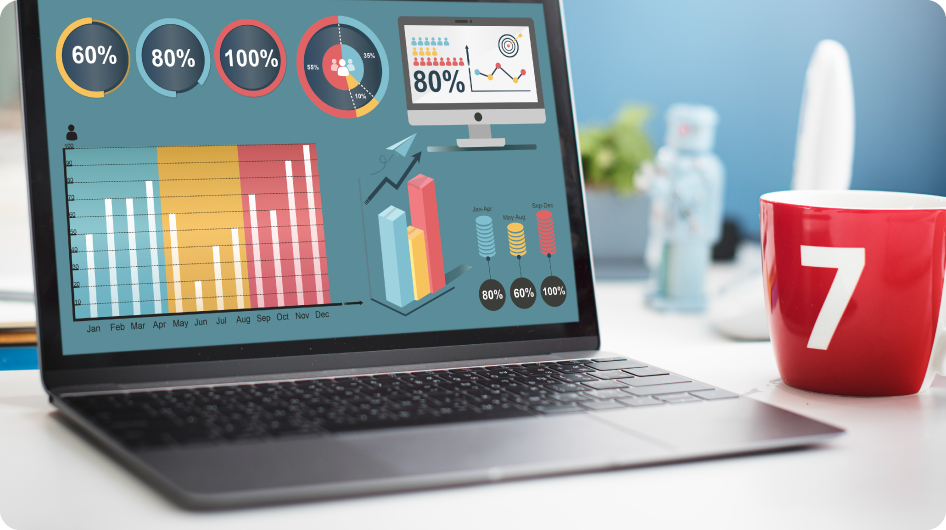This blog post explores various techniques to optimize product pages on Shopify Plus to achieve higher conversion rates. Discover effective strategies that are essential for any e-commerce business looking to increase sales and improve customer satisfaction.
Understanding the Importance of an Attractive Product Page
In today’s digital age, having an online presence for your business is no longer an optional luxury – it’s a necessity. With a plethora of e-commerce platforms available, Shopify Plus is a popular choice for businesses looking to create an online store. However, just having a store is not enough – you need to optimize your product pages to drive higher conversion rates. A well-designed product page can make all the difference in whether a potential customer decides to make a purchase or not.
An attractive product page is one that is visually appealing, easy to navigate, and provides all the necessary information a customer needs to make an informed decision. It should be designed to showcase your products in the best possible light, highlighting their unique features and benefits. A well-designed product page can help build trust with your customers and increase the likelihood of them making a purchase.
One of the primary benefits of an attractive product page is that it can help reduce bounce rates. When a potential customer lands on your page, they make a split-second decision whether to stay or leave. If your page is unappealing or difficult to navigate, they are likely to leave without making a purchase. On the other hand, an attractive product page can capture their attention and encourage them to explore your products further.
Another benefit of an attractive product page is that it can help improve your search engine rankings. Search engines like Google prioritize well-designed pages that provide a positive user experience. By optimizing your product pages, you can increase the likelihood of them appearing higher in search results. This, in turn, can drive more traffic to your site and increase your chances of making a sale.

An infographic showcasing the key elements of an optimized product page.
Creating High-Quality Product Images: A Picture is Worth a Thousand Words?
When it comes to online shopping, product images play a crucial role in the decision-making process. After all, customers can’t physically touch or see the product in person, so they rely heavily on images to gauge its quality and appeal. That’s why it’s crucial to invest in high-quality product images that accurately depict your products and showcase them in the best possible light.
One of the key elements of creating high-quality product images is lighting. Poor lighting can make your products appear dull, unappealing, and lacking in detail. On the other hand, good lighting can highlight your product’s unique features and make it look more attractive to potential customers. Consider investing in professional lighting equipment or taking your product photos in natural light for optimal results.
Another essential element of creating high-quality product images is composition. Your images should be well-framed and showcase your products from different angles to provide a complete view. Consider including lifestyle shots that show your products in use, as this can help customers visualize themselves using the product and increase the likelihood of them making a purchase.
In addition to lighting and composition, it’s also crucial to invest in high-quality equipment. Using a high-resolution camera can help capture the details and nuances of your products, making them look more appealing to potential customers. Consider investing in a tripod or stabilizer to ensure your images are sharp and in focus.
Leveraging Social Proof: How Can Customer Reviews Influence Conversions?
Customer reviews are a powerful tool for increasing trust and credibility in your brand. When potential customers see positive reviews from others who have purchased and used your products, they are more likely to trust your brand and make a purchase. In fact, studies have shown that over 90% of consumers read online reviews before making a purchase decision.
One way to leverage customer reviews is by displaying them prominently on your product pages. Consider adding a section for reviews and ratings, along with a star rating system that allows customers to rate your products on a scale of one to five stars. This not only provides valuable social proof for potential customers but also allows you to gather feedback on your products and make improvements where necessary.
Another way to leverage customer reviews is by responding to them in a timely and thoughtful manner. When customers take the time to leave a review, it shows that they care about your brand and are invested in your products. By responding to their reviews, you can show that you value their feedback and are committed to providing excellent customer service.
Encouraging customers to leave reviews is another effective way to leverage social proof. Consider sending follow-up emails after a purchase asking customers to leave a review and providing a link to your review section. You can also incentivize customers to leave reviews by offering a discount or other reward.

A screenshot of a product page featuring customer reviews and star ratings.
Crafting Compelling Product Descriptions: How to Appeal to Your Target Audience?
When it comes to optimizing your product pages for higher conversion rates, crafting compelling product descriptions is key. Your product descriptions should not only accurately describe your product but also appeal to your target audience and highlight the unique value proposition of your brand.
- 1. Know Your Target Audience:
One of the most important steps in crafting compelling product descriptions is understanding your target audience. What are their pain points, needs, and desires? What language do they use to describe products like yours? By understanding your audience, you can craft product descriptions that resonate with them and highlight the benefits of your products that matter most to them. - 2. Highlight the Benefits:
In addition to describing the features of your products, it is important to highlight the benefits that your products provide. Why should someone buy your product? What problem does it solve, or what need does it fulfill? By focusing on the benefits, you can create a sense of urgency and motivate potential customers to make a purchase. - 3. Use Engaging Language:
Your product descriptions should be written in a way that is easy to understand and engaging to read. Use descriptive language that paints a picture of how your product can improve someone’s life. Use bullet points to break up long paragraphs and make it easy for potential customers to scan your product descriptions quickly.
Strategically Implementing Upsells and Cross-sells: Can They Enhance the Customer Experience?
Upselling and cross-selling are powerful techniques that can increase revenue and enhance the customer experience. By suggesting related products that complement the customer’s original purchase, you can increase the value of their order and provide them with additional solutions to their needs.
- 1. Make Relevant Suggestions:
To effectively implement upselling and cross-selling, it is important to suggest products that are relevant to the customer’s original purchase. For example, if a customer is purchasing a laptop, suggesting a laptop case or extra storage could be relevant and helpful. - 2. Don’t Be Pushy:
While upselling and cross-selling can be effective, it’s important not to be pushy or aggressive. Customers should feel like they’re receiving helpful suggestions, not being pressured into purchasing additional items they don’t need. - 3. Offer Discounts:
Offering discounts on related products can be a great way to incentivize customers to make additional purchases. For example, offering a discount on a laptop case when purchasing a laptop can encourage customers to add the case to their order. - 4. Simplify the Process:
To make upselling and cross-selling as seamless as possible, it is important to simplify the process. This can include providing product recommendations on the product page or during the checkout process, or even offering bundled packages that include related products at a discounted price. - 5. Measure the Results:
As with any marketing technique, it is important to measure the results of your upselling and cross-selling efforts. This can include tracking the number of upsells and cross-sells, as well as the revenue generated by these techniques. By analyzing this data, you can continuously improve and refine your upselling and cross-selling strategies.

A visual representation of upselling and cross-selling techniques in action.
Mobile Optimization: Are You Reaching Your Full Potential?
With the increasing use of mobile devices for online shopping, it is crucial to ensure that your product pages are optimized for mobile users. Mobile optimization involves creating a user-friendly experience for customers who are browsing and making purchases on their smartphones or tablets. If your product pages aren’t optimized for mobile, you may be missing out on potential sales and frustrating customers who are trying to navigate your website on a small screen.
One key aspect of mobile optimization is ensuring that your website is responsive. This means that the website adapts to the size of the screen it’s being viewed on, so that customers can easily view and interact with your product pages on their mobile devices. A responsive website also ensures that your product pages are accessible to all customers, regardless of the device they’re using.
In addition to having a responsive website, it is important to simplify the checkout process for mobile users. This can include streamlining the checkout form, offering mobile payment options like Apple Pay or Google Wallet, and providing clear instructions for entering shipping and billing information. A seamless checkout experience can reduce cart abandonment and increase conversions for mobile users.
Another key aspect of mobile optimization is optimizing your product images and descriptions for mobile. This can include using high-quality images that load quickly on mobile devices, and formatting product descriptions so that they’re easy to read on a small screen. By optimizing your product pages for mobile, you can provide a positive user experience for customers and improve your chances of making a sale.
Utilizing Data Analytics to Continuously Improve Your Product Pages
Data analytics can be an incredibly powerful tool for optimizing your product pages and increasing conversions. By analyzing data on user behavior, traffic sources, and conversion rates, you can gain valuable insights into what’s working and what’s not on your product pages. These insights can help you make data-driven decisions about how to improve your product pages and maximize your sales potential.
One key area where data analytics can be useful is in identifying areas of your product pages that are causing friction for customers. For example, if you notice that a large percentage of customers are abandoning their carts on a particular page, you can use data analytics to investigate what might be causing the problem. By analyzing user behavior and tracking metrics like bounce rate and time on page, you can identify specific elements of the page that may be causing frustration or confusion for customers.
Another way that data analytics can be useful is in identifying opportunities for upsells and cross-sells. By tracking customer behavior and purchase history, you can identify products that are frequently purchased together, and use this information to strategically promote complementary products on your product pages. This can not only increase the value of each sale, but also help to improve the overall customer experience by providing relevant product recommendations.
Data analytics can also be used to track the effectiveness of different marketing channels and campaigns. By analyzing data on traffic sources and conversion rates, you can determine which channels are driving the most traffic and sales to your product pages. This can help you allocate your marketing budget more effectively and make data-driven decisions about which channels to focus on in the future.

An analytics dashboard displaying important metrics for optimizing product pages.
In conclusion, optimizing product pages on Shopify Plus is crucial for achieving higher conversion rates. By implementing the techniques discussed in this blog post, e-commerce businesses can effectively enhance their customers’ experience, encourage repeat purchases, and ultimately boost sales.







